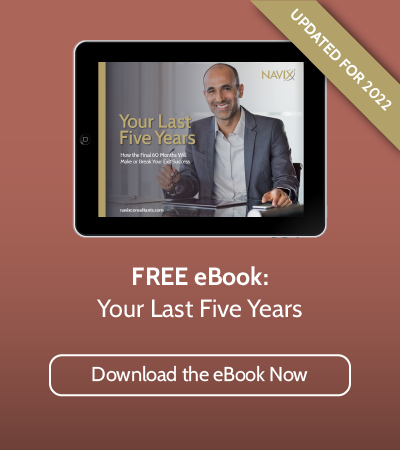At NAVIX, we know that most business owners’ top goal at exit is to reach financial freedom, which means having enough money so that work is a choice and not an economic necessity. If reaching financial freedom is the number one goal at exit, then your Exit Magic Number™ – the net amount needed to get there – is the most important number to know. So, what’s the second most important number to help you prepare for exit? Your company’s adjusted EBITDA. Unfortunately, many owners either do not know this number or calculate it incorrectly. Here’s why.
Many business owners consider at some point sharing ownership of their business with one or more key employees. Sharing ownership can create powerful advantages—retaining employees for the long-term is usually a top motive. Sharing ownership appears to elevate top employees into a true partnership with you in the ongoing effort to grow the business.
Let me share with you three quick and true stories of business owners, and how each failed to achieve and maintain financial freedom at exit.
Story 1 - Joe
When I first met Joe, he was sitting in his desk chair, a broken man. He had sold his trucking company a couple of years earlier, expecting to fully retire. Joe had received some cash at closing, but a large portion of the deal included debt, financed by him. Shortly after selling, the economy had softened, and the new owner made some bad moves in the market. The company plummeted and defaulted on its payments to Joe. As a result, Joe had to take the business back. However, by then, the company was a shell of its former self, and market conditions stunk. To keep it afloat, Joe had to put back into the company much of the cash he had received at closing. Joe was tired. Joe was dejected. Joe was broken.
Do you have at least one child working in your family business, and at least one child who is not working in your business? If you do, and if you want to treat all of your children fairly in your business exit and succession planning, prepare not to treat them equally. Because in exit planning for family businesses, fair is not equal and equal is not fair.
To show why, here’s a true story involving a previous client.
Two businesses are of the same size. One sells for twice the price of the other. Why does this happen?
It happens all the time. Take two companies from the same industry and similar size, offer them for sale, and one sells for a premium price compared to the other.
There are factors or conditions within any business that will increase (or decrease) its value at sale. If you are a business owner contemplating selling your company one day, it is essential to know what conditions enhance or detract from company value. These conditions take time to implement or fully realize—sometimes several years or longer. So, the sooner you get started, the better.













